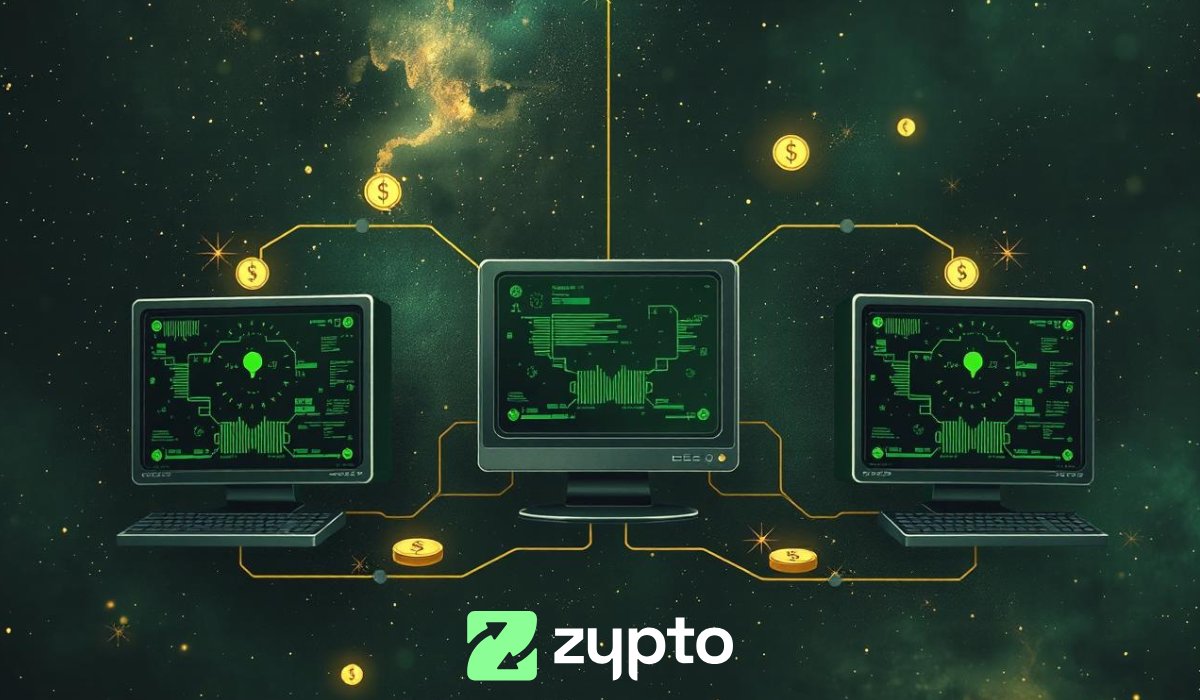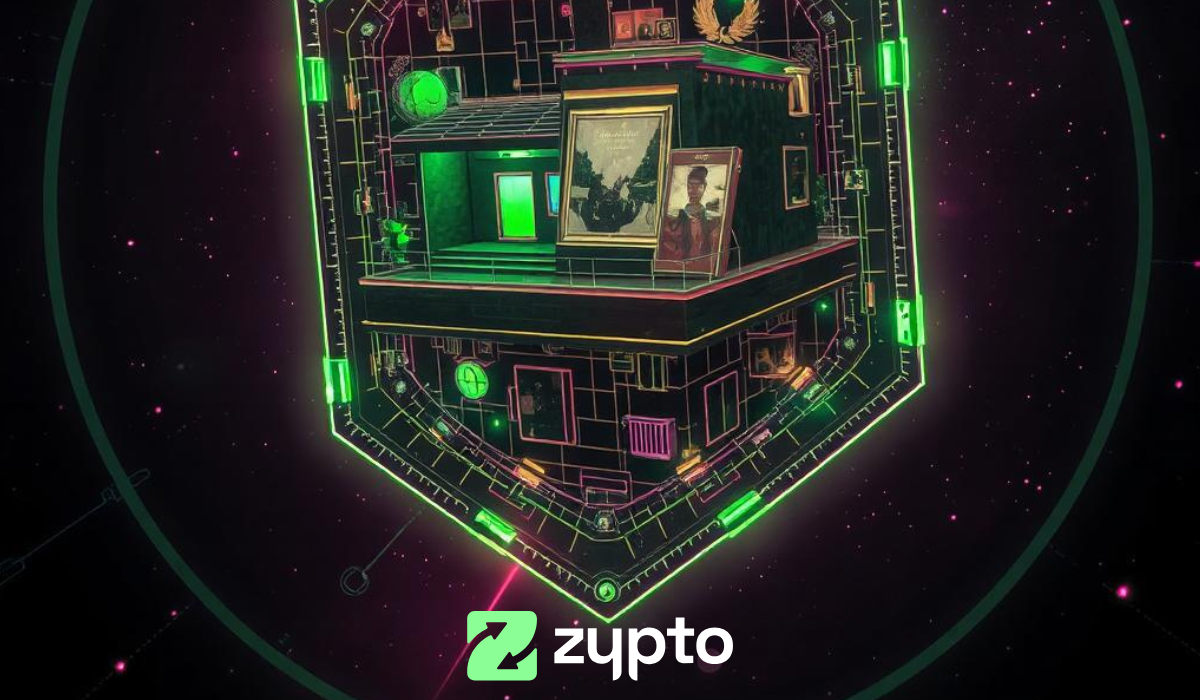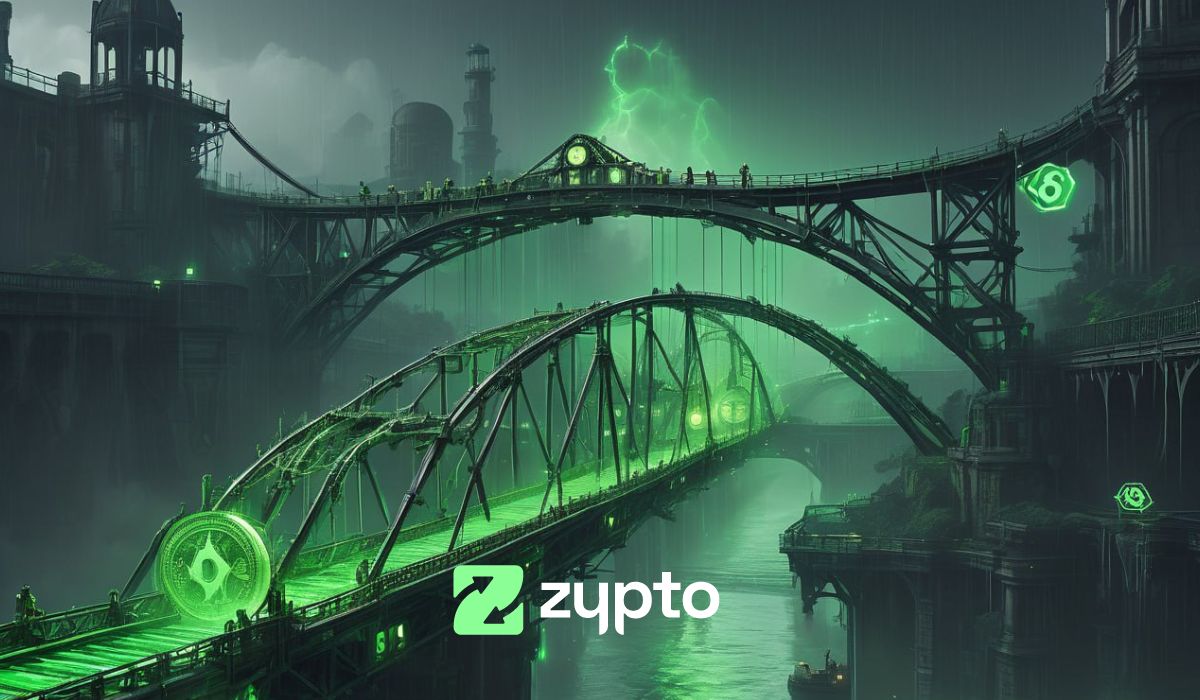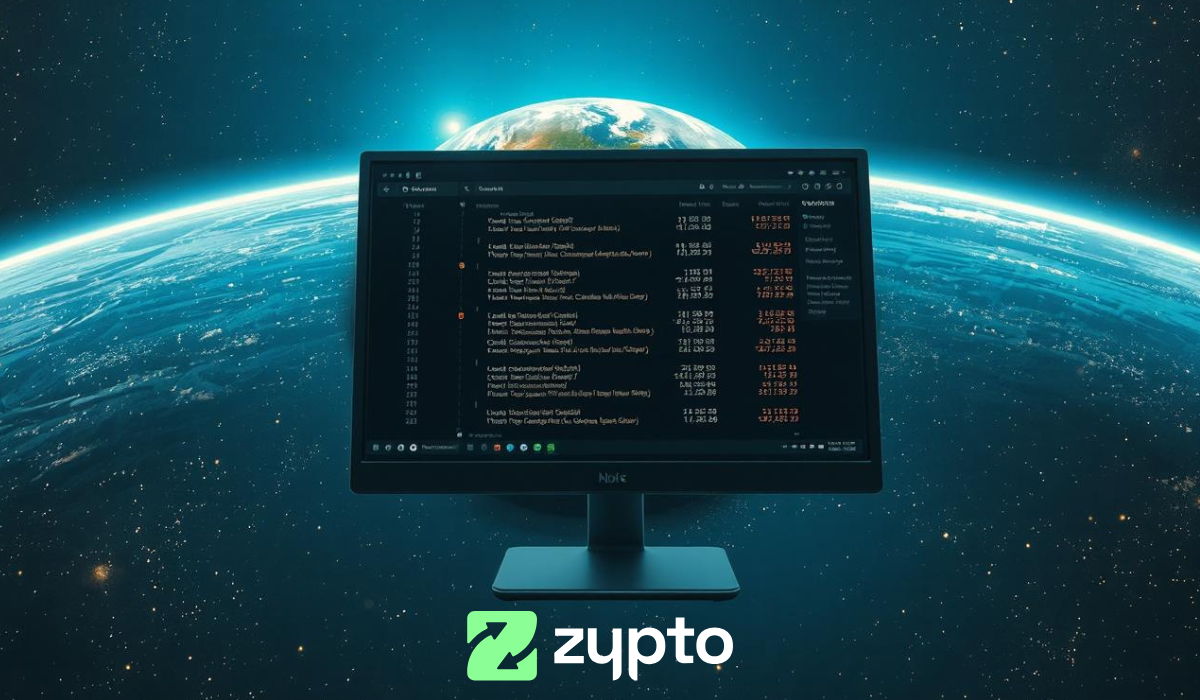Web3 and Blockchain technology have taken the world by storm with revolutionary features, and one key attribute is Decentralization — the ability of a system or a process to be controlled by a distributed network, eliminating the need for a centralized authority.
As blockchain continues to evolve, its adoption is also on the rise, birthing the release of numerous protocols and projects. However, there’s a crucial hurdle blockchain needs to overcome for widespread adoption — this is where scaling solutions come in.
This article explores two main approaches to blockchain scaling — Layer-1 and Layer-2 solutions. What do blockchain scaling solutions mean, what do they do, and how do they contribute to the goal of making Web3 safer and easier to use? Let’s find out!
What is Blockchain Scalability?
Imagine a busy highway, where cars zoom off at the national speed limit, but all drivers slow down and halt at traffic lights. This shows that cars move speedily on highways but slow down when approaching traffic lights — that’s how the blockchain works!
But no, the blockchain doesn’t deal with cars, it carries information (transactions). Blockchain transactions are fast, secure, and transparent, but when there’s too much traffic on the network, things slow down dramatically — this is where scalability comes in.
Blockchain scalability refers to a network’s ability to handle a growing number of transactions efficiently. It essentially addresses how well a blockchain can maintain fast transaction processing times and low fees as the user base and transaction volume increase.

Why is Scalability Important?
Limited scalability poses a significant challenge for blockchain adoption. Here’s why:
Slow Transactions
When a blockchain reaches its capacity, transaction confirmation times can become painfully slow. This can be frustrating for users and hinder real-world applications.
High Fees
With increased congestion, transaction fees can skyrocket. This can discourage users from participating in the network.
Limited Usability
Blockchains with poor scalability struggle to support complex applications requiring high transaction volume. Fortunately, developers are constantly innovating to address scalability challenges. This is why there are two main approaches — Layer 1 and Layer 2 solutions.
What Are Layer-1 and Layer-2 Scaling Solutions?
To address these scalability issues, various scaling solutions have been developed, primarily categorized into Layer-1 and Layer-2 solutions. These solutions aim to enhance the performance and scalability of blockchain networks in different ways.
Layer-1 Scaling Solution
In order to improve the scalability and speed of the blockchain, layer-1 scaling solutions require significant modifications to the original protocol. This includes modifications to the blockchain’s architecture and consensus mechanisms.
These changes are directly integrated into the core layer of the blockchain, aiming to handle more transactions per second (TPS) and improve overall efficiency. By optimizing the core layer, Layer-1 solutions seek to increase the blockchain’s capacity without relying on external systems or layers.
Layer-2 Scaling Solution
Layer-2 scaling solutions operate on top of the existing blockchain, creating an additional layer for transaction processing. These solutions aim to enhance the blockchain’s scalability by offloading transactions from the main chain, thus reducing congestion and improving speed.
Layer-2 solutions handle transactions off-chain and periodically settle them on the main blockchain, ensuring security and decentralization are maintained. This approach allows for increased transaction throughput and reduced fees without altering the underlying blockchain protocol.
How Do Layer-1 Scaling Solutions Work?
Layer-1 scaling solutions involve making fundamental changes to the blockchain’s base protocol to enhance its scalability and performance. These solutions aim to increase the capacity of the blockchain by improving its core features and operations.
The primary focus is on optimizing the blockchain’s architecture and consensus mechanisms to handle more transactions per second (TPS) and improve overall efficiency.
Examples of Layer-1 Scaling Solutions
Increased Block Size
This straightforward approach expands the amount of data each block can hold, allowing more transactions to be processed per block. Bitcoin, for instance, has a block size limit of 1 MB, while Bitcoin Cash increased it to 32 MB. However, raising the block size excessively can lead to centralization, as it necessitates more powerful computers to validate blocks.
Proof-of-Stake (PoS)
A shift from Proof-of-Work (PoW) — the consensus mechanism used by Bitcoin — to Proof-of-Stake can enhance scalability. In PoW, miners compete to solve complex puzzles to validate transactions and earn rewards. PoS, on the other hand, validates transactions based on the number of coins a user holds (their stake). This eliminates the intensive computational power required in PoW, leading to faster transaction processing.
Sharding
This method partitions the blockchain into multiple shards, each processing transactions independently. This significantly increases transaction throughput as multiple shards can validate transactions simultaneously. However, sharding can introduce complexity and potential security risks, as it requires communication and coordination between shards.

Advantages and Limitations of Layer-1 Scaling Solutions
Benefits of Layer-1 scaling solutions:
Increased Transaction Throughput
Layer-1 scaling solutions can significantly boost the number of transactions processed per second by the blockchain, making the network more efficient and capable of handling higher loads.
Enhanced Security and Decentralization
By improving the core protocol, Layer-1 solutions often maintain or enhance the inherent security and decentralization properties of the blockchain, ensuring robust and trustless operations.
Long-Term Sustainability
Fundamental improvements to the blockchain’s architecture can provide lasting benefits, setting a solid foundation for future scalability and performance enhancements without requiring continuous off-chain solutions.
Reduced Congestion and Lower Fees
With more efficient transaction processing, the network experiences less congestion, leading to lower transaction fees and faster confirmation times for users.
Limitations of Layer-1 Scaling Solutions
Complex Implementation
Implementing Layer-1 changes can be technically complex and may require significant time and resources. These changes often involve consensus among the community and developers, which can be challenging to achieve.
Risk of Hard Forks
Major changes to the blockchain’s protocol can lead to hard forks, where the blockchain splits into two separate networks. This can create confusion, security risks, and fragmentation within the community.
Scalability Trade-Offs
Some Layer-1 solutions might involve trade-offs, such as sacrificing some degree of decentralization or security to achieve higher scalability. Balancing these trade-offs is a critical challenge.
Limited Immediate Impact
While Layer-1 solutions provide long-term benefits, their immediate impact might be limited compared to Layer-2 solutions, which can often deliver quicker scalability improvements by operating on top of the existing blockchain.
How Do Layer-2 Scaling Solutions Work?
Layer-2 scaling solutions operate on top of the existing blockchain, creating an additional layer that handles transaction processing more efficiently. These solutions aim to reduce the load on the main blockchain by offloading transactions and processing them off-chain or on secondary networks.
The results of these transactions are then periodically settled on the main blockchain, ensuring the security and integrity of the overall system. By doing so, Layer-2 solutions can significantly enhance the scalability and speed of blockchain networks without requiring fundamental changes to the base protocol.
Examples of Layer-2 Scaling Solutions
State Channels
These allow multiple transactions to be conducted off-chain between parties. Once the transactions are complete, the final state is recorded on the main blockchain, minimizing on-chain transaction volume.
Sidechains
These are separate blockchains that run in parallel to the main chain and are connected to it. Transactions can be processed on the sidechain and then periodically settled on the main chain, reducing the main chain’s workload.
Rollups
These bundle multiple transactions into a single transaction that is then posted to the main chain. Optimistic Rollups and Zero-Knowledge (ZK) Rollups are the two main types of rollups. Both handle transactions off-chain and then submit a summary back to the main blockchain. This method aims to increase transaction throughput efficiently.

Advantages and Limitations of Layer-2 Scaling Solutions
Benefits of Layer-2 scaling solutions:
Improved Scalability
By handling transactions off-chain or on extra layers, Layer-2 solutions greatly boost transaction throughput while lowering the strain on the primary blockchain.
Lower Transaction Fees
By offloading transactions from the main chain, Layer-2 solutions help reduce network congestion, leading to lower transaction fees for users.
Faster Transaction Speeds
Transactions processed on Layer-2 solutions can be confirmed much faster than those on the main chain, improving the user experience.
Preservation of Main Chain Security
Since Layer-2 solutions ultimately settle on the main blockchain, they inherit the security and decentralization benefits of the underlying Layer-1 protocol.
Limitations of Layer-2 Solutions
Complexity
Implementing and managing Layer-2 solutions can be technically complex, requiring sophisticated infrastructure and protocols to ensure seamless integration with the main chain.
Trust Assumptions
Some Layer-2 solutions may introduce additional trust assumptions, potentially compromising the trustless nature of blockchain transactions.
Dependency on Main Chain
While offloading transactions, Layer-2 solutions still rely on the main chain for final settlement, meaning they cannot completely eliminate main chain bottlenecks.
User Adoption
For Layer-2 solutions to be effective, widespread user adoption and support from the broader ecosystem (e.g., wallets, and exchanges) are essential.
Comparing Layer-1 and Layer-2 Scaling Solutions
Here’s a direct comparison between Layer-1 and Layer-2 scaling solutions:
Approach
Layer-1 solutions modify the base layer of the blockchain. On the other hand, Layer-2 solutions operate on top of the existing blockchain.
Implementation
Layer-1 solutions involve direct changes to the blockchain protocol and architecture, while Layer-2 solutions create secondary layers or networks for transaction processing.
Scalability
Layer-1 solutions enhance scalability by increasing the blockchain’s inherent capacity. Layer-2 solutions, on the other hand, offload transactions from the main chain, significantly improving throughput.
Security and Decentralization
Layer-1 solutions typically maintain or enhance these attributes, but can involve trade-offs. Meanwhile, Layer-2 solutions rely on the main chain for final settlement, preserving security, but they can introduce additional trust assumptions.
Complexity and Risk
Layer-1 solutions entail high complexity and risk, including potential hard forks and consensus challenges. In contrast, Layer-2 solutions are technically complex but avoid altering the base protocol. Their success depends on user adoption and ecosystem support.
Conclusion
In the quest to make blockchain technology scalable and efficient, both Layer-1 and Layer-2 scaling solutions play critical roles. Layer-1 solutions involve fundamental changes to the blockchain’s core protocol, enhancing its capacity and performance directly.
Meanwhile, Layer-2 solutions operate on top of the existing blockchain, offloading transactions to secondary layers to alleviate congestion and improve speed.
Each approach has distinct advantages and limitations, and their combined use is essential for achieving robust, scalable blockchain networks that can handle increased demand and provide a seamless user experience.
Zypto: Elevating Blockchain Scalability with Layer-1 and Layer-2 Solutions
Zypto is dedicated to revolutionizing blockchain technology with cutting-edge scaling solutions. We believe in the potential of blockchain for everyday use, and our innovative tools make this a reality. As a licensed EU Virtual Asset Service Provider, Zypto is committed to enhancing the scalability and efficiency of Web3 applications.
Ready to experience the future of blockchain? Take a look around our website to learn how Zypto uses both Layer-1 and Layer-2 solutions to optimize your blockchain operations.
P.S. We’d love to hear your thoughts on Layer-1 and Layer-2 scaling solutions! Leave a comment below and share your questions or experiences.

What are scaling solutions for ETH?
Scaling solutions for Ethereum include Layer 2 technologies like rollups (Optimistic and zk-Rollups), state channels, and sidechains.
These solutions aim to increase transaction throughput and reduce costs without compromising security.
What is a layer 2 scaling solution?
A Layer 2 scaling solution is a secondary framework or protocol built on top of a blockchain (Layer 1) to enhance its scalability.
Examples include rollups, state channels, and plasma chains, which process transactions off-chain or in a more efficient manner while relying on the main blockchain for security and finality.
What is scaling in crypto?
Scaling in crypto refers to improving a blockchain’s capacity to handle a higher number of transactions per second (TPS).
This can be achieved through various methods, such as increasing block size, optimizing consensus mechanisms, or implementing Layer 2 solutions.
What are layer 1 scaling solutions?
Layer 1 scaling solutions involve changes or upgrades to the main blockchain protocol to enhance its performance.
Examples include increasing block size, improving consensus algorithms (like moving from Proof of Work to Proof of Stake), and implementing sharding to distribute the processing load across multiple nodes.






















Great blog post on Web3 and Blockchain! It’s fascinating to see how Layer 1 and Layer 2 scaling solutions are addressing scalability challenges. The article provides an overview of Web3 fundamentals, the role of Layer 1 blockchains like Ethereum and Bitcoin, and the impact of Layer 2 solutions like the Lightning Network and Optimistic Rollups. . Keep up the great work, Zypto!
Definitely another great article thanks team